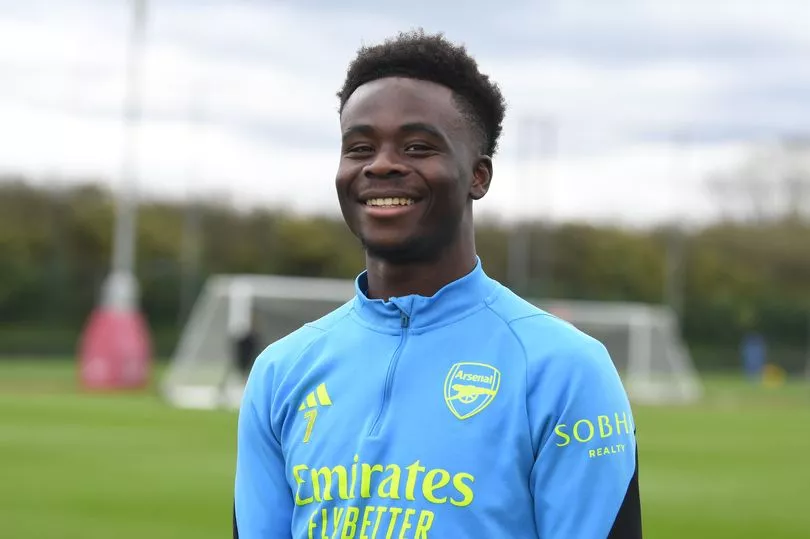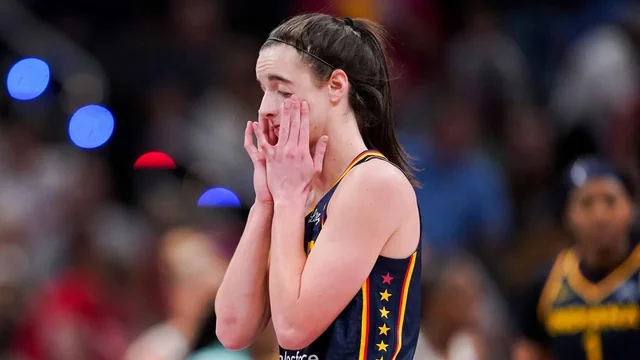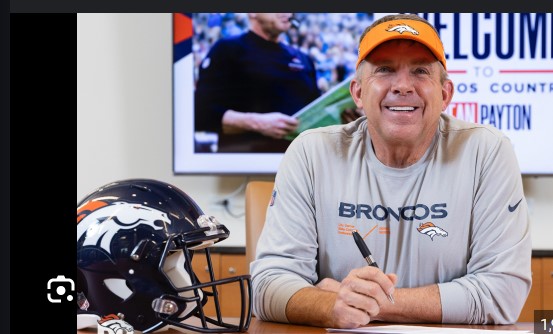Two generational players for two generational teams tweeted an eerily similar message to their fans, assuring them that they share in the pain and desperately want to stop the bleeding both for themselves and the fanbase they represent, eleven years apart.

In 2009, the Warriors were an afterthought in the NBA and looked primed to be going no where. Stephen Curry had just been drafted, he shared a backcourt with the more established point guard Monta Ellis, the team was headed in no particular direction, and the ownership situation was one of the worst in the NBA. The entire losing history of the Warriors leading to this point is detailed in this phenomenal piece by Bill Simmons.
Eleven years later, in North London, Bukayo Saka found himself in a similar situation at Arsenal. The team was rebuilding under manager Mikel Arteta but it was unclear if there was hope for significant improvement. The team was in mid-table form in the Premier League and had a weak showing in the Europa League group stage.
There are many parallels between these two superstars and franchises. What followed these tweets was a rapid ascent that most fanbases dream of. Stephen Curry won four NBA Championships and back-to-back MVP awards.
Saka at 22, is on track to become one of the best footballers in the world (despite Rio Ferdinand’s opinion). Although Arsenal hasn’t delivered on the trophies yet, they are well-positioned to do so. Saka is a part of it but first, we need to examine the organizational culture changes needed for these teams to flourish.
Change of Ownership
The Golden State Warriors dynasty began with Joe Lacob and Peter Guber purchasing the Warriors for a record sum at the time: $440m. Previously the team had languished under owner Chris Cohan. Cohan was a hands-off owner who knew little about running a sports franchise, hiring key executive talent, and team reinvestment. The previous two decades had seen mostly failure, with losing season after losing season and stuck in the bad but not bad enough to get a superstar in the draft zone. In 2007, the team surprised by defeating the top-seeded Dallas Mavericks 4-2 in the playoffs under coach Don Nelson. However, the this was quickly squandered as the team decided to save money by not retaining key talent and trading off assets.
Lacob and Guber promised significant improvements immediately. They were trying to change the culture of the franchise, something challenging to pull off, especially after decades of allowing mediocrity to seep into every nook and cranny of the team.
At Arsenal, the culture change begins with the Kroenke’s taking full control of Arsenal. With this move, Josh Kroenke has increased involvement in the club becoming a more regular fixture and the public face of the ownership group.
Stan Kroenke was largely a hands-off owner by most accounts, he earned the nickname “silent Stan” for his reluctance for public communication about his teams and that was no different with Arsenal. He was based in the US, mostly focused on his US franchises, and had limited knowledge of how to run a Premier League club. He was trying to apply US sports franchise ownership principles to another league and culture where those principles didn’t necessarily apply. The US sports leagues are something similar to a feudal, equal-opportunity environment where one fortunate draft pick can propel you to the top (See: James, LeBron or Bryant, Kobe). In the Premier League, sustained excellence requires diligence, significant financial investment, and a strong organizational culture. Arsenal lacked at least two of the three.
Establishing a Culture
One of the major moves Lacob and Guber made in the first year of their ownership was trading franchise cornerstone player Monta Ellis. Ellis was a high-scoring, low-defense, low IQ player who put together a nice stat line and highlights package but was never going to lead the team to success in the postseason as the focal point.
If the Warriors were going to change the culture, they needed to build an identity around winning basketball. They traded Ellis for the oft-injured but defensively-minded and high IQ center, Andrew Bogut. While greatly criticized for this move, it set the tone for the next decade of their ownership. It also did something more important: it opened the door for Stephen Curry to become the key to the franchise.
For the Gunners, this moment, documented in the Amazon docuseries All or Nothing, was when star player Pierre-Emerick Aubameyang was dismissed from the club for not upholding the culture and giving his all in games. This followed longtime talisman Mesut Ozil being waived from his contract for similar reasons.
Manager Mikel Arteta was instilling a new culture. Golden State Warriors manager Mark Jackson was emphasizing that defense and effort win championships, regardless of the sport. Mikel wanted a team that would press high up the pitch and swarm opponents until they gave up possession of the ball. He aimed to keep possession and maintain a clean sheet. In Oakland, Mark Jackson was striving to elevate a team that was consistently in the bottom ten in defensive rating to the top 10.
The Logo
The Warriors made one of the biggest hires in their franchise’s history when they brought on NBA Legend and former Lakers star, Jerry West. West built the great Lakers teams of the 80’s and 90’s and was famously known for identifying Kobe Bryant as a generational talent when he was entering the draft in 1996. Lacob and Guber convinced him to take an advisory role with the Warriors and he was involved in some key decisions, notably deciding not to trade shooting guard Klay Thompson for power forward Kevin Love, a move that was panned by critics at the time.
Lacob and Guber were stacking talent throughout the organization. Another key hire at the time was a young former agent and aspiring general manager Bob Myers. Myers’ work as an agent meant he knew how to gain the trust of the players, their agents, and develop relationships. He was also a former player under John Wooden and had an eye for identifying talent.
Rick Welts, former Phoenix Suns executive, stepped in and laid the groundwork for what was going to be the cornerstone project for the franchise: the new arena in San Francisco. Welts turned the business side of the organization around and he was able to capitalize on the immense amount of technology and venture capital dollars flowing through the Bay Area at the time. The money flowed into the team, with the improvement on the court creating a flywheel of further sponsorships, leading to more investment and a better end product.
At London Colney, key figures were Tim Lewis, Edu Gaspar, and Richard Garlick. The club had sustained massive losses when it came to player transfers over the previous years as they chased short-term quick improvements trying to recapture and had their big transfer bets blow up, including Nicolas Pepe, a record transfer loss for the club.
With Edu, there was a clear direction of where the club was headed stylistically. There was also a clear emotional connection to the club as he was a former player. The same can be said of Bob Myers, who was a lifelong Warriors fan and grew up attending games at the Oakland Arena.
Contracts are key to success in sports and in business. Richard Garlick, a lawyer and expert at negotiating contracts with players, and Bob Myers, with experience as a player agent and knowledge of the other side of the table, were instrumental in restructuring the wage bill at a club. As you restructure your wage bill at a club, there’s an importance in being capital efficient. Both executives have been instrumental in doing so by negotiating team-friendly deals and extending players at the right time under favorable terms.
Discovering Franchise Cornerstones
Stephen Curry was not an immediate success in the NBA. His first few years in the league were plagued with ankle and foot injuries, forcing him to miss numerous games and hampering his development. Curry was runner-up for the Rookie of the Year award in his first season, but it was beginning to seem like he might not reach his full potential due to his penchant for reinjuring his ankle.
Trading Ellis opened the door for Curry’s potential to shine through, but that success was not guaranteed if he couldn’t stay on the floor. The Warriors brain trust had a difficult decision to make: do they extend this oft-injured young promising star and at what price? They decided to do so at a bargain price, and resigning Curry allowed the Warriors to keep their core players together for their entire championship run.
Bukayo Saka was quickly moving up the ranks of Arsenal’s youth academy over 5,000 miles away at Hale End. Arsenal had not had a major academy product in quite some time, the last being Jack Wilshere. Wilshere enjoyed a short, injury-filled but memorable career. Bukayo offered inexpensive star power for Arsenal’s reemergence in a similar way to Curry. It’s not only about having a young star, it’s about having one that doesn’t break the bank. Saka has gone on to star for the England National Team and is considered one of the best forwards in the Premier League if not the World.
Conclusion
My goal for this piece has been to compare two franchises. It’s about examining what goes into rebuilding a team; there isn’t a roadmap for bringing a team back to greatness, but in each of these teams, there are clues.
Most importantly, “Ownership is the biggest competitive advantage in sports,” as NBA blogger and podcaster Danny Leroux states. This holds true across every sport. You can usually trace the nexus of something that has gone wrong with a team back to the top. Is there a clear direction? Are they hiring the right talent on the sports and business sides? Is there enough capital investment? A team might be able to outperform its ownership in the short term but eventually, the issues become apparent.
Case in point: Chelsea Football Club. While Todd Boehly has certainly committed tons of capital to bring Chelsea back into the top 4 in the Premier League, he has done so imprudently and put his club in a precarious financial position. Look no further than their latest financial statements and the burden they will be under trying to stay within the profitability and sustainability rules.
With effective ownership, many pieces can start to align. A strong, capable management team will be hired, and they will in turn bring in the right talent beneath them. The talent will bring in the right players at the right price.
You need luck. None of this happens without their star players, Saka and Curry, with both Arsenal and the Warriors. Warriors fans have enjoyed an incredible 10-year run of watching one of the greatest of all time. Hopefully, Arsenal fans will have the same opportunity with Saka.


